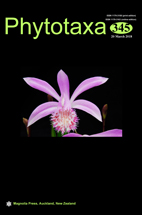Abstract
Bauhinia species are popular ornamental and medicinal plants with a pantropical distribution. In December 2016, powdery mildew symptoms were found on B. blakeana and B. purpurea in Guangdong, China. Based on ITS and 28S rDNA sequences, as well as morphological characters, the powdery mildew was identified as Erysiphe lespedezae. Previous records of powdery mildews on Bauhinia spp. are discussed. Based on morphological and molecular phylogenetic analyses of type material, Pseudoidium caesalpiniacearum is reduced to synonymy with E. lespedezae. To our best knowledge, this is the first report of E. lespedezae causing powdery mildew on B. purpurea in China, and B. blakeana as a new host. A detailed morphological description and molecular data are provided herein.

